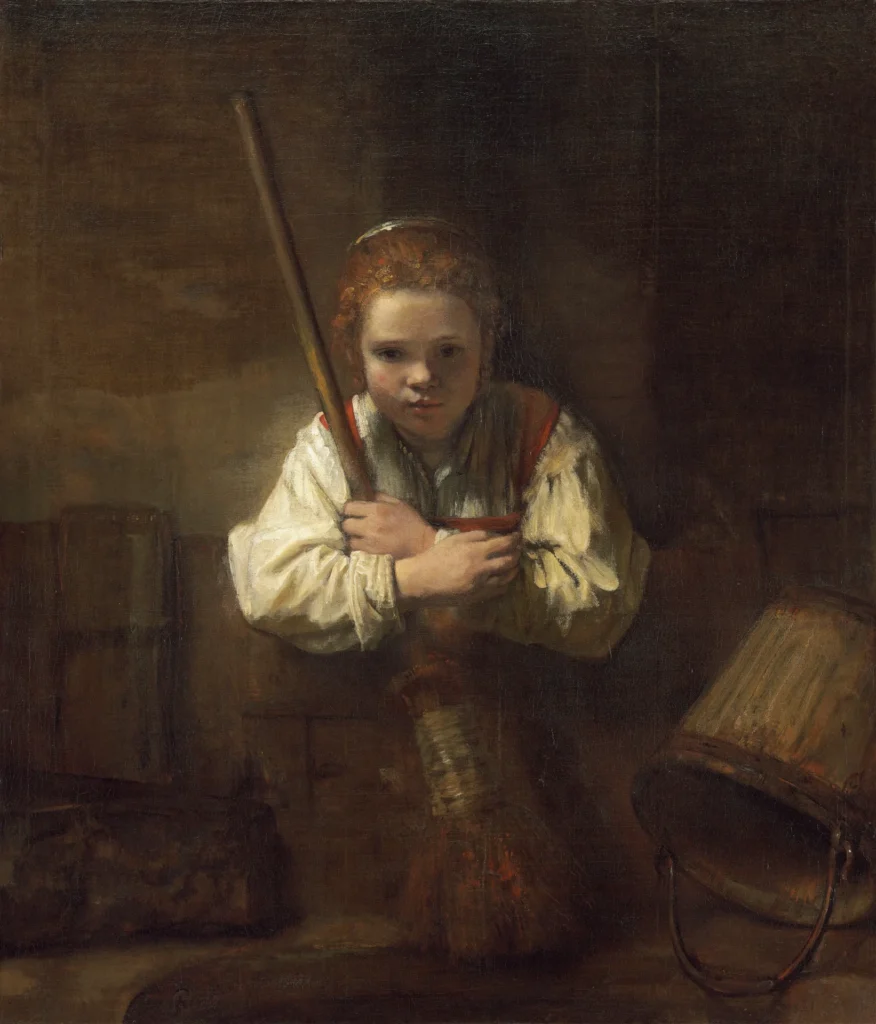A Girl with a Broom
This captivating painting, likely created between 1646 and 1651, features a young girl holding a broom while gazing directly at the viewer. The nuanced modeling of her face and hands, alongside the vibrant brushwork in her attire, showcases the skilled artistry typical of Rembrandt’s students, particularly Carel Fabritius. The charming scene reveals elements of daily life in the 17th century, pointing to the intimate connection between artists and their subjects in the Dutch Golden Age.
1646 - 1651
About the Artwork
A Girl with a Broom provides a glimpse into the collaborative world of Rembrandt’s workshop during the 1640s. While traditionally linked to the master himself, it is more likely a creation of his skilled students, particularly Carel Fabritius, who excelled in modeling and brushwork. The painting features a domestic scene with a young servant leaning over a wooden fence, highlighting the everyday life of Dutch society. This connection to Rembrandt's artistic lineage reflects the shared influence and creative exploration within his circle, making the piece a rich representation of its time.
Did You Know
Carel Fabritius, an advanced student of Rembrandt, was known for his innovative techniques and use of light. Although he had a brief career due to his untimely death in 1654, his influence is recognized particularly in the development of Dutch painting.
A Girl with a Broom reflects the broader trend in 17th-century Dutch art that focused on the everyday life and inner workings of domestic spaces, showcasing the significance of genre scenes in conveying social narratives.
Rembrandt’s workshop was renowned not only for the masterpieces that emerged but also for the educational environment it fostered, leading to the growth of several prominent artists, all contributing to the rich tapestry of the Dutch Golden Age.
Liked what you see? Add it to your collection.
Enjoyed reading? Share it.
... continued
Attribution
The painting is believed to have been created by an artist from Rembrandt's immediate circle, rather than by Rembrandt himself. Artists such as Samuel van Hoogstraten and Carel Fabritius, who were advanced students and assistants in Rembrandt's workshop, are considered possible creators of this work.
Style and Technique
The painting features nuanced modeling of the face and hands, along with rough bravura brushwork, particularly in the sleeves. These characteristics are consistent with the style of Carel Fabritius, who was known for his skill in these areas.
Composition
The painting depicts a young girl leaning over a wooden fence, holding a broom and staring directly at the viewer. The scene includes a well, an overturned bucket, and another dark object, possibly a trough. The girl has been identified as a young servant from Rembrandt's household.
Date
The painting was probably begun between 1646 and 1648 and completed around 1651.
Historical Context
During the 1640s, Rembrandt's workshop involved advanced students working as assistants, who would help execute paintings that were later sold under Rembrandt's name. These works were often free adaptations of Rembrandt's own compositions and would be signed and dated by him if he approved them.










